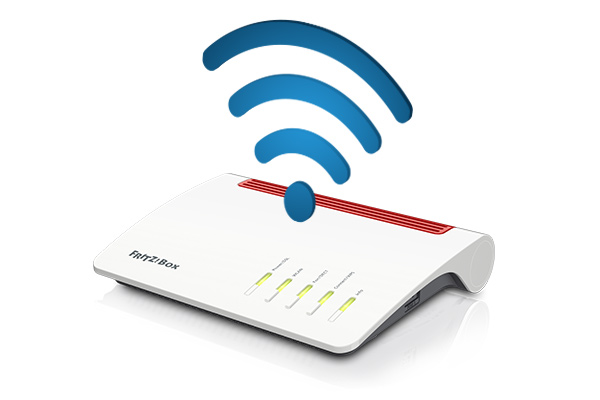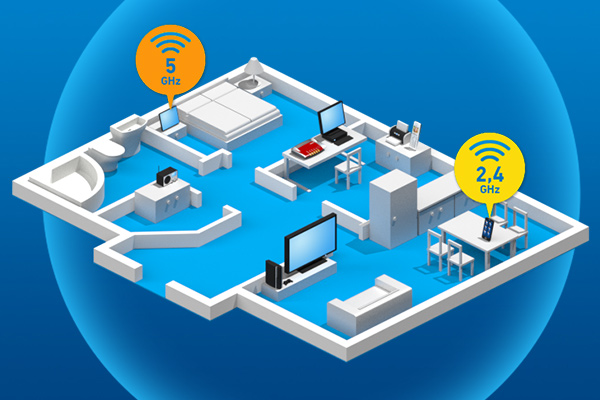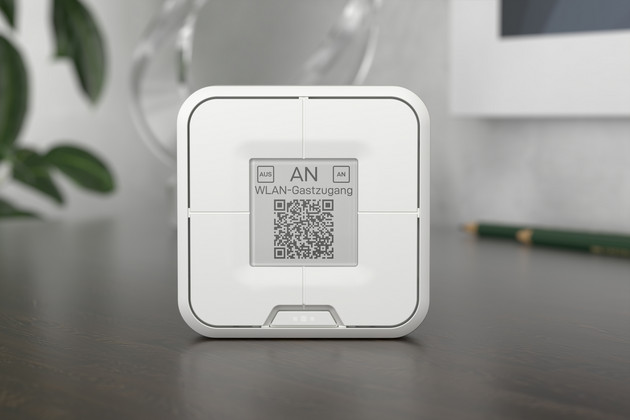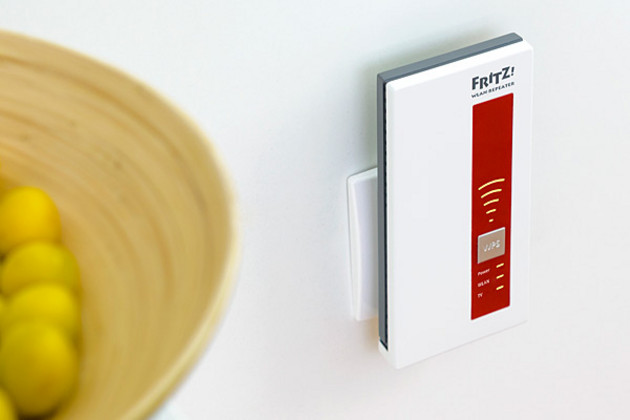Everything you need to know about Wi-Fi - Everything you need to know about Wi-Fi
AVM Content

Wi-Fi is one of the world's favorite ways to access the Internet. And that's no surprise, since a Wi-Fi connection is established in no time and enables high transmission rates, and because practically every terminal device comes with a Wi-Fi module or can be supplemented with a wireless adapter.
But this wasn't always the case. At the dawn of the DSL age, Internet connections were established via LAN cable, before Wi-Fi proved to be a more sophisticated alternative. Besides, there are all kinds of Wi-Fi: the technology keeps evolving, with its progress marked by a variety of standards. This article takes a closer look at the different standards and offers other interesting facts about Wi-Fi.
What is Wi-Fi?
Wi-Fi stands for Wireless Fidelity, the same thing as WLAN (Wireless Local Area Network). It uses radio frequencies to send signals between devices such as tablets and smartphones, establishing a wireless connection. For this, a router that supports Wi-Fi is required. It receives the incoming DSL, cable or LTE signal and forwards it to the devices within range.
Aside from this, the wireless connection works the same way a cable-based network does: Wi-Fi devices register and exchange data with the router. The advantages are obvious: you don't need cables and you can roam freely throughout the coverage area with your smartphone or handheld device without losing signal. The devices reconnect automatically when they return to the Wi-Fi coverage area. The modern WPA encryption featured in all FRITZ!Box models keeps Wi-Fi connections safe. All Wi-Fi networks are secured by an individual network key upon delivery.
What are the advantages of dual Wi-Fi?
Since Wi-Fi networks use radio waves, communication needs to be transmitted on a certain network or frequency range. The 2.4 GHz network has been a standard for years. This means that all wireless devices in the home network use this frequency, which not only results in a lot of traffic due to the quantity of hardware, but can also lead to interference between devices. An alternative to the 2.4 GHz band is the 5 GHz band, which is subject to much lower interference for Wi-Fi.
When Wi-Fi 5 was introduced in 2013 it kick-started broader utilization of 5 GHz Wi-Fi networks, wherever a corresponding client is available. Dual Wi-Fi means the FRITZ!Box is able to serve connected devices on both channels concurrently. And when the technology inside the wireless router enables it to decide autonomously which band to use for which device and to switch accordingly; this is called band steering.
The latest standard is called Wi-Fi 6. It ensures faster data transfers and a higher capacity in the wireless network, especially when multiple wireless devices are logged onto the Wi-Fi hotspot at the same time. There aealso updates and better performance for the 2.4 GHz network for the first time in around ten years.
What standards are there?
The most important Wi-Fi standards are listed below:
|
IEEE 802.11: |
This is the standard that serves as the basis for communicating over wireless networks. The first wireless standard, introduced in 1997, transmitted data at 1 Mbit/s. The letters "IEEE" refer to the developers of the standard: the Institute of Electrical and Electronics Engineers. The following standards are developments of IEEE 802.11. |
|
IEEE 802.11b: |
The first advancement dating from the turn of the millennium is signified by the b. In theory, Wireless b enables up to 11 Mbit/s in the 2.4 GHz network. |
|
IEEE 802.11g: |
Wireless g is the next stage of Wireless b and also transmits solely on the 2.4 GHz network. The maximum throughput was raised to 54 Mbit/s and was available as a standard as of 2003. |
|
IEEE 802.11n: |
In September 2009, the successor standard Wi-Fi 4 was released. Wi-Fi 4 supports devices transmitting either on the 2.4 GHz or the 5 GHz network and is able to transfer data at up to 600 Mbit/s. |
|
IEEE 802.11ac: |
Wi-Fi 5 was standardized at the end of 2013 and is the most common type of Wi-Fi network. Standardized for the 5 GHz band, Wi-Fi 5 can reach speeds of up to 1733 Mbit/s with a device configuration equipped with 4 antennas. Find out more here. |
|
IEEE 802.11ac / Wi-Fi 6: |
The latest standard is called Wi-Fi 6, providing higher speeds and more efficient use of radio frequencies. Find out more in our guide. |










